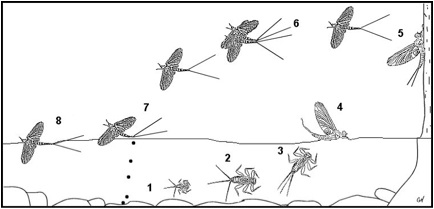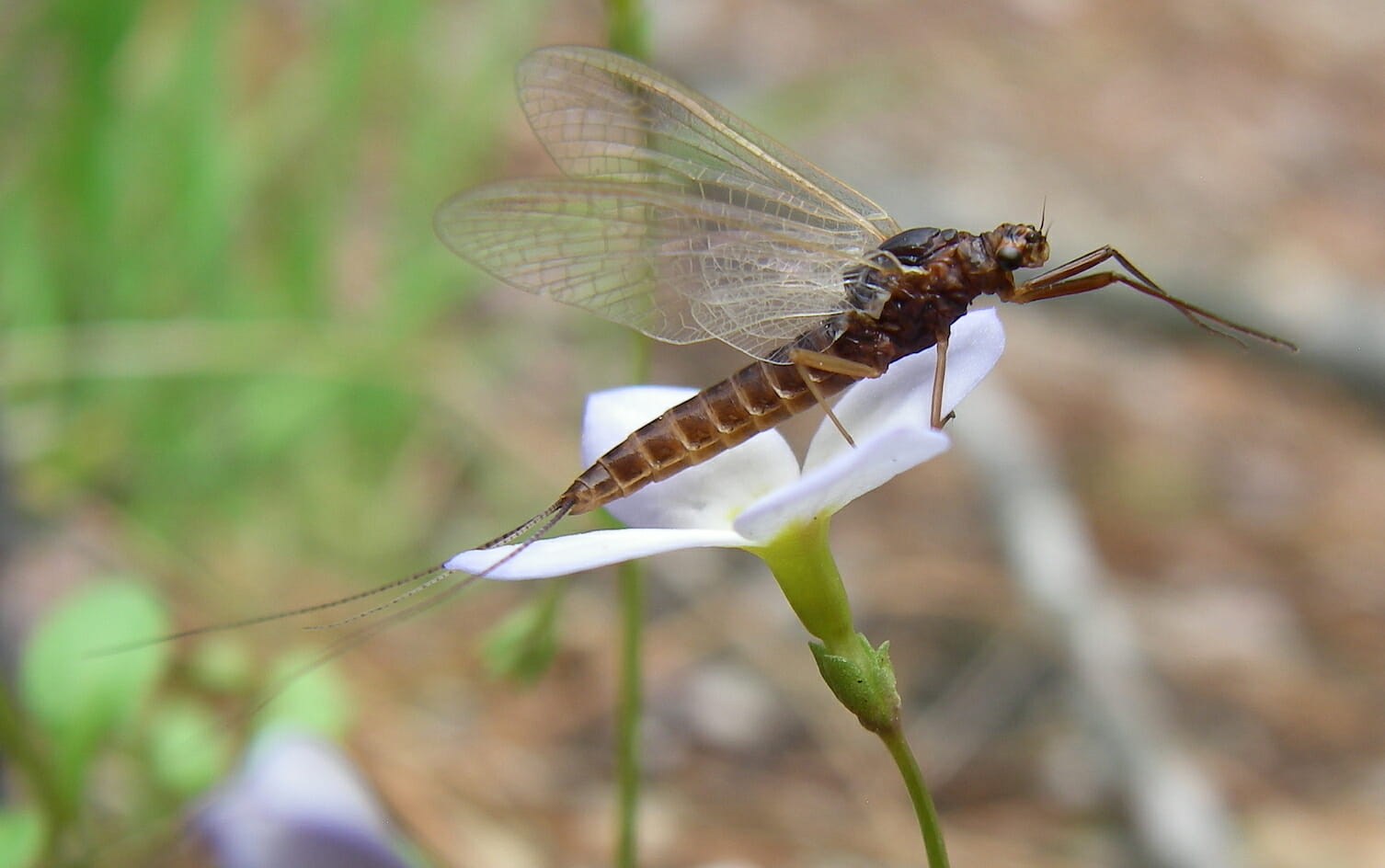Leptophlebia spinner. Jerry Schoen photo.
By Jerry Schoen
My introduction to fly-fishing came courtesy of a heavy Hendrickson hatch on the Battenkill River, back in the 1970s. The fish were willing, and it all seemed easy – an impression corrected over the next several days of trial, error and inconsistencies in weather, the behavior of emerging insects and the varying enthusiasm of rising trout. In the decades since, I’ve come to know and love other floating and flying insects, but the Hendrickson, Ephemerella subvaria, remains a favorite.
We all have favorite hatches. Many of us arrange our work and travel schedules to be there for the hatch we most want to match. These are the other charismatic species for anglers, as alluring in their way as the Salmonids we pursue, perhaps even more evocative of a day on a stream. When you think of a particular hatch, what comes to mind? Chances are it’s not just the end game – a trout in the net. Noonday sun or arctic half-light, shirtsleeve weather or neoprene, cedar waxwings snapping up flying duns in mid-flight, sage in bloom, lush green or sere brown streamside foliage.
The diversity of aquatic insects and their comfort zones for water type, geographic range, and time of emergence give the angler a strong sense of place and season, and a wealth of memories of a given stream, a special day. We remember the inclement weather, high water and splashy rises of a Hendrickson or salmonfly hatch, and reminisce over the late season sipping behavior and skinny water of a trico or Cahill spinner fall. For trout anglers, the season is perhaps defined more by the hatches we fish than by the trout we fish for.
Phenology drives much of this variability. It determines the angler’s calendar. Insect hatch dates are just one example of phenology, the plant and animal life cycle events influenced by climate variations. Fall foliage, bird migrations, and the mating call of the trumpeting elk, the toad, the snowy tree cricket are others. Changing climate is disrupting phenology the world over, up and down the food chain. There is evidence, largely anecdotal to date, that aquatic insect hatches ain’t when they used to be. This is a problem, and most likely a lot worse than messing with fly selection, or scheduling that next fishing trip. Some mayfly, caddis and stonefly species may be at risk, which can’t be good for the birds, bats and trout that feed on them.
Water temperature is the underlying factor in the supposed emergence shifts. Consider the mayfly life cycle. A female spinner deposits eggs into the stream. Days or weeks later, the first instar (the stage between molts for a larva) appears. During its larval life, a mayfly will progress through between 10 and 40 instars.

Warmer water, winter included, speeds up the instar parade. It also trips a quicker transition from growth to the development of adult body parts, which happens in the last instar. This may mean smaller adults – a study in England documented smaller adult Ephemera danica (their green drake) during several warm water years.
As with fish, the smaller adult females produced fewer eggs. When water is too warm, fewer nymphs survive to become adults, falling prey to disease and other factors. So we have sparser hatches with smaller specimens.
Looking on the bright side, trout may just find other food sources, and we’ll just have to live with lousier dry fly fishing. A worse case scenario is that trout will suffer; there may be different times of the year, or different life stages when trout depend on emerging insects for a significant portion of their diet. A worst case scenario is that the effects ripple through aquatic as well as terrestrial ecosystems. Terms such as “catastrophic environmental consequences” have been used in scholarly literature on shifting phenology.
Much of this is speculation, as data are scarce on phenology changes, particularly for aquatic insects. Some anglers are working to change this, by participating in The River’s Calendar project, initiated by Trout Unlimited and several partner organizations. Anglers and other naturalists post observations of adult mayflies, caddis and stoneflies to The River’s Calendar on the iNaturalist.org web site. We are building a database that in time may help to answer these and other questions about the health of an important, and valued, component of the aquatic ecosystem.
Want to do something about climate change and have fun doing it? Check out The River’s Calendar, add your own observations, and help us get a better handle on what’s happening in our trout streams.
Jerry Schoen is the Associate Director Emeritus of Outreach and Education at the Water Resources Research Center, University of Massachusetts, Amherst. Schoen also serves on TU’s Climate Change Working Group.



